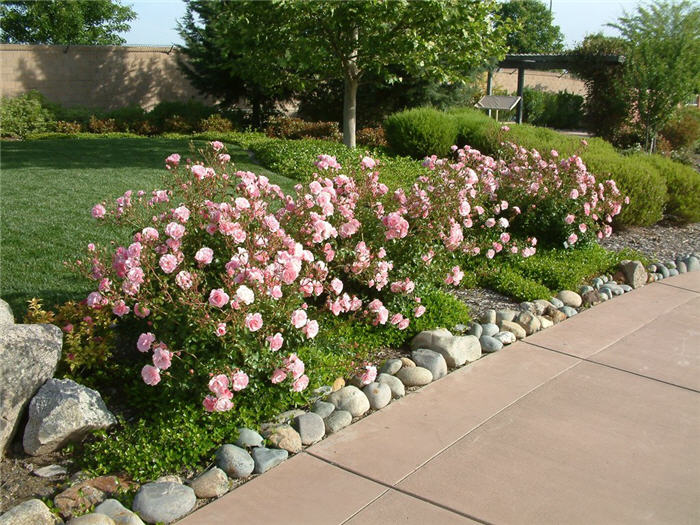| Botanical Name: Rosa x Meidiland Varieties | |
| Common Name: Meidiland Varieties Rose selections |

-
Anatomy
-
Culture
-
Design
Plant Type
Shrub, Ground cover
Height Range
1-3'
Flower Color
Pink, Red, White
Flower Season
Summer, Fall
Leaf Color
Green
Bark Color
Brown
Fruit Color
Red
Fruit Season
Fall, Persistent
Sun
Full, Half
Water
Medium
Growth Rate
Moderate
Soil Type
Clay, Loam
Soil Condition
Average, Rich, Well-drained
Soil pH
Neutral
Adverse Factors
Thorns/Spines
Design Styles
English Cottage, Formal, Mediterranean, Ranch, Spanish
Accenting Features
Showy Flowers
Seasonal Interest
Summer, Fall
Location Uses
Background, Entry, Perennial Border, Shrub Border, Foundation, Patio, Raised Planter, Walls / Fences
Special Uses
Hedge, Mass Planting, Small Spaces
Attracts Wildlife
Birds, Butterflies
Information by: Stephanie Duer
Photographer:
Photographer:
-
Description
-
Notes
Meidiland roses are nearly ubiquitous in commercial and institutional landscapes, offering summer-long color and surprising durability for a rose. Generally growing about 1 to 2 feet tall with a spread of about 4 to 5 feet, they have a pleasant arching habit that makes them useful as a sort-of groundcover, or for cascading over walls. They do not require deadheading to remain flowering, and bloom from May to frost. Available in a variety of reds, pinks, and white. Dark green foliage and hips that ripen red in the fall, persisting into winter.
Grow in well drained, loamy soil in full sun to light shade, though best flowering will occur in full sun. Avoid over-head watering as that can increase the incidence of leaf diseases. Cut back in late winter to early spring, and they are not particular as to how you go about that, though for best growth, see the Guides for pruning tips.